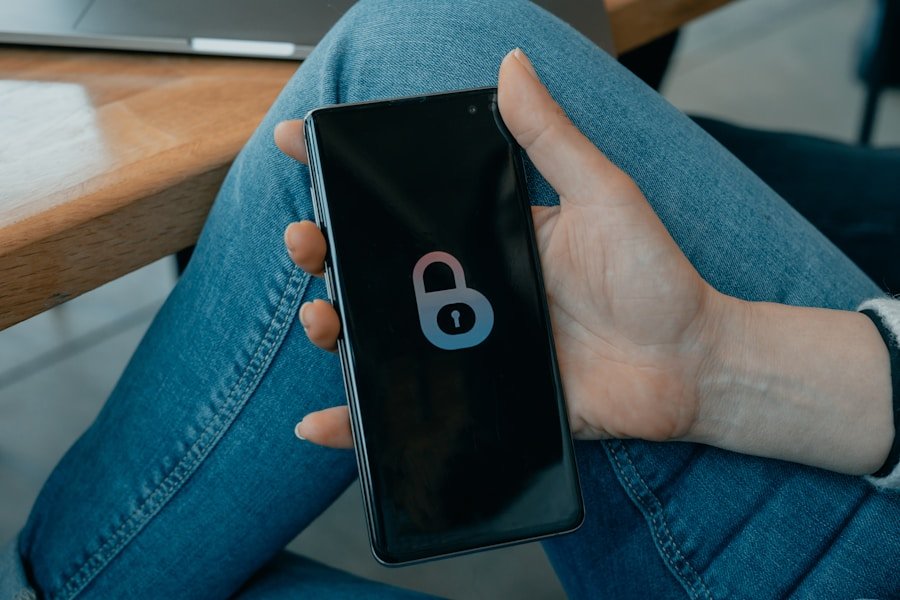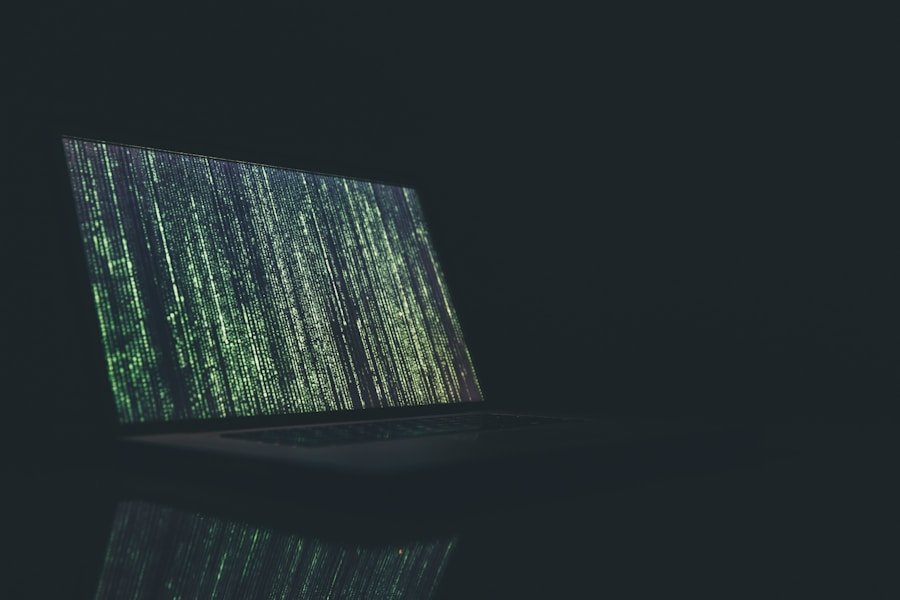In recent years, file encryption ransomware has emerged as a significant threat to both businesses and individuals. This type of malware is designed to encrypt files on a victim’s computer, rendering them inaccessible until a ransom is paid. The growing reliance on digital data and the potential for financial gain have contributed to the surge in file encryption ransomware attacks.
As more sensitive information is stored on computers, the likelihood of a successful ransomware attack has increased exponentially. The increasing sophistication of cybercriminals has also fueled the rise of file encryption ransomware. Historically, ransomware attacks were relatively simple and easy to detect.
However, with advancements in technology, cybercriminals have developed more complex tactics. Today, file encryption ransomware is often disseminated through phishing emails, malicious websites, and other deceptive strategies, making it increasingly challenging for businesses and individuals to protect themselves from these attacks. Consequently, it is crucial for organizations and individuals to understand the mechanisms of file encryption ransomware and take proactive measures to prevent becoming victims.
Key Takeaways
- File encryption ransomware is on the rise and it’s important to understand how it works and its impact on businesses and individuals.
- File encryption ransomware works by encrypting files on a victim’s computer and demanding payment for the decryption key.
- Businesses and individuals can protect themselves from file encryption ransomware by regularly backing up their data and using strong, up-to-date security measures.
- If you are targeted by file encryption ransomware, it’s important to not pay the ransom and seek professional help to mitigate the attack.
- The future of file encryption ransomware is expected to involve new trends and tactics, making it crucial for businesses and individuals to stay informed and prepared.
Understanding File Encryption Ransomware
How File Encryption Ransomware Works
This type of malware encrypts files on a victim’s computer, making them inaccessible until a ransom is paid. The malware is often distributed through phishing emails, malicious websites, and other deceptive tactics. Once the files are encrypted, the victim is given instructions on how to pay the ransom in order to receive the decryption key.
The Consequences of File Encryption Ransomware
In some cases, the ransom demand may also come with a threat to delete the files if the ransom is not paid within a certain timeframe. The malware is designed to be difficult to detect and remove, making it extremely challenging to recover the data without the decryption key.
Protecting Yourself from File Encryption Ransomware
This has made file encryption ransomware a particularly effective tool for cybercriminals looking to extort money from their victims. As a result, it is crucial for businesses and individuals to be aware of the potential threat posed by file encryption ransomware and take steps to protect themselves from becoming victims.
How File Encryption Ransomware Works
File encryption ransomware works by using advanced encryption algorithms to lock a victim’s files. Once the malware has infected a computer, it will begin encrypting the files on the hard drive, making them inaccessible to the victim. In some cases, the malware may also encrypt files on connected network drives, further complicating the recovery process.
Once the files have been encrypted, the victim will receive a message demanding payment in exchange for the decryption key. In many cases, file encryption ransomware will also display a message on the victim’s computer, explaining what has happened and providing instructions on how to pay the ransom. This message may also include a threat to delete the files if the ransom is not paid within a certain timeframe.
This can create a sense of urgency for the victim, making them more likely to pay the ransom in order to regain access to their files. As a result, file encryption ransomware has become an increasingly lucrative business for cybercriminals looking to extort money from their victims.
The Impact of File Encryption Ransomware on Businesses and Individuals
The impact of file encryption ransomware on businesses and individuals can be devastating. For businesses, a ransomware attack can result in significant financial losses, as well as damage to their reputation and customer trust. In some cases, businesses may also face legal and regulatory consequences if sensitive customer data is compromised as a result of a ransomware attack.
For individuals, a ransomware attack can result in the loss of important personal files, such as family photos, financial documents, and other irreplaceable data. In addition to the financial and emotional impact of file encryption ransomware, there is also a broader societal impact to consider. As more and more businesses and individuals fall victim to ransomware attacks, the overall security of digital data is called into question.
This can erode trust in online services and lead to increased skepticism about the safety of storing sensitive information online. As a result, it is crucial for businesses and individuals to take steps to protect themselves from file encryption ransomware and other types of malware.
Steps to Protect Yourself from File Encryption Ransomware
There are several steps that businesses and individuals can take to protect themselves from file encryption ransomware. One of the most important steps is to regularly back up important files to an external hard drive or cloud storage service. By keeping backup copies of important data, businesses and individuals can minimize the impact of a ransomware attack and avoid having to pay a ransom to regain access to their files.
Another important step is to keep software and operating systems up to date with the latest security patches. Cybercriminals often exploit vulnerabilities in outdated software to distribute malware, so keeping systems updated can help prevent ransomware attacks. Additionally, businesses and individuals should be cautious when opening email attachments or clicking on links from unknown or suspicious sources.
Phishing emails are a common method for distributing ransomware, so being vigilant about email security can help prevent an attack.
Dealing with File Encryption Ransomware Attacks: Best Practices
Immediate Action is Crucial
In the event of a file encryption ransomware attack, swift and effective response is vital for businesses and individuals. The first step is to isolate infected computers from the network to prevent the malware from spreading to other devices.
Seeking Professional Help
It is essential to report the attack to law enforcement and seek assistance from cybersecurity professionals who can aid in recovery efforts. These experts can provide valuable guidance and support in mitigating the attack’s impact.
Identifying the Ransomware and Exploring Recovery Options
If possible, identifying the type of ransomware that has infected the systems can be beneficial. This information can help determine if there are any known decryption tools available that can recover the encrypted files without paying the ransom. In some cases, cybersecurity experts may be able to assist with decrypting files or recovering data without requiring a ransom payment.
The Evolution of File Encryption Ransomware: New Trends and Tactics
As technology continues to advance, so too do the tactics used by cybercriminals to distribute file encryption ransomware. In recent years, there has been a trend towards more targeted attacks on specific industries or organizations. Cybercriminals are increasingly using social engineering tactics to gain access to sensitive information that can be used in targeted ransomware attacks.
Another trend is the use of more sophisticated encryption algorithms that make it even more difficult for victims to recover their files without paying the ransom. Additionally, cybercriminals are increasingly using cryptocurrency as a method for collecting ransoms, making it more difficult for law enforcement agencies to track and apprehend those responsible for ransomware attacks.
The Future of File Encryption Ransomware: What to Expect
Looking ahead, it is likely that file encryption ransomware will continue to evolve as cybercriminals find new ways to exploit vulnerabilities in digital systems. As technology continues to advance, so too will the tactics used by cybercriminals to distribute malware. This means that businesses and individuals will need to remain vigilant in order to protect themselves from becoming victims of file encryption ransomware.
One potential future trend is an increase in targeted attacks on specific industries or organizations. Cybercriminals are likely to continue using social engineering tactics to gain access to sensitive information that can be used in targeted ransomware attacks. Additionally, as cryptocurrency becomes more widely accepted as a method of payment, it is likely that cybercriminals will continue using it as a way to collect ransoms from their victims.
In conclusion, file encryption ransomware poses a significant threat to businesses and individuals alike. Understanding how file encryption ransomware works and taking steps to protect against it is crucial for safeguarding sensitive data from cybercriminals. By remaining vigilant and implementing best practices for cybersecurity, businesses and individuals can minimize the risk of falling victim to file encryption ransomware attacks in the future.
FAQs
What is file encryption ransomware?
File encryption ransomware is a type of malicious software that encrypts the files on a victim’s computer, making them inaccessible. The attacker then demands a ransom in exchange for the decryption key.
How does file encryption ransomware infect a computer?
File encryption ransomware can infect a computer through various means, including phishing emails, malicious websites, and software vulnerabilities. Once the ransomware is executed on the victim’s computer, it begins encrypting files.
What are the consequences of a file encryption ransomware attack?
The consequences of a file encryption ransomware attack can be severe, as it can lead to the loss of important data and disrupt business operations. Victims may also face financial losses if they choose to pay the ransom.
How can organizations protect themselves from file encryption ransomware?
Organizations can protect themselves from file encryption ransomware by implementing security best practices, such as regularly updating software, using strong passwords, and educating employees about the risks of phishing attacks.
Should victims of file encryption ransomware pay the ransom?
It is generally not recommended to pay the ransom, as there is no guarantee that the attacker will provide the decryption key. Additionally, paying the ransom only encourages further criminal activity. Victims should instead seek assistance from law enforcement and cybersecurity professionals.













